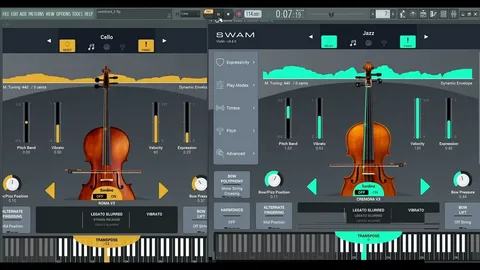A perfect violin solo is something that can bring an entire track to life. It acts to build tension, soften transitions, or provides you with that gut-punch of emotion which you didn’t know your mix was missing. But when it comes to recording live strings, it isn’t exactly something that most producers have easy access to. That’s where you have to navigate to the ACE Studio and fetch its AI violin plugin which makes all the difference.
This tool provides you with realistic, expressive solos along with the nuance and depth of a real violinist, not at all strings attached. Whether you are just going to generate indie ballads, chill trap beats, or cinematic scores, this guide reveals how to make violin solos best that breathe and move with your music.
Contents
Start With the Right Moment in the Track
Prior to loading up the AI violin plugin, you must have to figure out why you people need a violin solo in your music. It is just for introducing a breakdown, filling space in a bridge, or wanting to add emotion to a chorus.
Once you have a clear purpose, it becomes easier to shape a solo that actually serves the track as compared to just just sitting on top of it.
Load the Plugin and Choose a Suitable Tone
Right after pin-pointing the, you have to bring it in the AI violin plugin. Thanks to the flexibility by Acestudio as it lets you attain the options that fit different moods. If you people need something raw and emotional, you have to stick with the solo tone with heavy vibrato. And, if you want something cleaner and intimate, you should have to go with a softer articulation.
You don’t have to be a string expert, all you need is to trust your ears and simply match the sound to the emotion of your music.
Build a Melody With Feeling, Not Just Notes
This part is immensely important to generate the best violin solos. If you drop in a scale run or just randomly drag notes for MIDI, all you need to end up with something cold. Rather than treating it like a conversation. The best practice involves imagining a violinist playing for the ease of expressing a feeling, not just following a score.
To get more, you should have to use small pauses between phrases. Also, enabling a few notes must hang longer than others.
Use MIDI Expression to Shape Your Solo
This is where you have got the melody in place, the time comes to shape the violin performance by using expression and dynamics. The ACE Studio AI violin plugin here swiftly reacts to velocity, modulation, and pitch blends the same as a real player would. So, just make a single click and ride that modulation wheel. Then, make adjustments for the velocity of each note to generate natural swells. Now, push into some MIDI notes and quickly pull back from the others.
Although these are some small changes, they still make a huge difference in how expressive the solo sounds.
Mix It Into Your Track — Don’t Just Drop It In
If you just throw your solo on top of the mix, it can sound out of place. This is where you have to blend it in like you would with your music vocals. You ought to add light compression if essential, EQ to carve space, and simply the right amount of reverb for the ease of matching your track’s environment.
Sometimes a touch of stereo widening works best, it helps the solo feel more immersive. Other times, keep the focus right where it actually belongs.
Let the Solo Breathe
There’s no need to overproduce the violin part. The AI violin plugin already functions to introduce natural imperfections including: slight timing shifts, expressive bowing, realistic vibrato. So, you people don’t have to “fix” those. If faced, these parameters are what make the solo feel alive.
When it comes to best violin moments, they’re the ones that feel human, even if no human streamed them.
Fortunately, the right AI violin plugin provides you with the freedom to add emotion without hiring a session player. So, stick with this tool and get an expressive violin note at a time.
